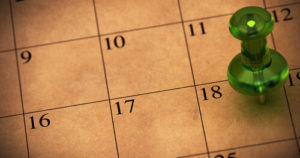Should You Start a Fire With a Cold Chimney?
The end of the summer is a fantastic time to begin planning for winter weather and the use of your fireplace or stove. It’s also a great time to schedule a fireplace and chimney inspection.
You should never light a fire in your fireplace or appliance unless you have had an annual inspection and cleaning. During the several months of summer animals can crawl into your flue causing obstruction, water can seep into your lining causing damage, and numerous other things can happen in your chimney system. For this reason the Chimney Safety Institute of America (CSIA) recommends regular chimney sweeps, and annual inspections.
Once your fireplace is clean, safe, and you have properly-seasoned wood on hand you are ready to light a fire! However, a roaring fire and a cold chimney do not make a good combination.
The Problem With a Cold Chimney
When lighting your first fire of the season it’s important to remember that the chimney is cold. It’s filled with cold air that will fall into your house as soon as you open the damper. If the chimney isn’t primed before you build the fire, that cold will block the warm air from rising up, causing “air sink”, which will push smoke into your house.
Fortunately, there are a couple of things you can do to warm your chimney before you light that first fire.
- Open the damper and you will usually feel the cold draft fall into your fireplace or stove. Some people decide to leave the damper open and let the heat in your house warm the chimney. Not only can this take several minutes or hours, if your fireplace is your method of home heating this won’t work for you. Also, if your chimney is on the outside of your house, this method most likely won’t work as the winter temperatures continue to cool the chimney.
- Roll a newspaper and light it, holding it direction under the damper for three to four minutes. This allows for direct heat to move into the chimney and force it’s way up. If it is very cold, you may need to repeat this method with a second newspaper. During this process you can usually feel the exchange of warm and cold air. Once this happens, your chimney is primed.
Build a top-down burn in the fireplace or appliance. A top-down burn, sometimes called an upside-down fire, allows for a cleaner burn, and makes the best use of the fireplace, producing less smoke in the process. Instead of placing tinder at the bottom and building on top of the struggling fire, you build in the opposite way: placing large logs at the bottom, then medium logs, then tender and kindling, adding a bit of paper to the top to light. This fire burns from the top, lighting the larger wood as the fire and ash falls. A top-down fire will also burn hotter, ensuring your chimney flue is thoroughly primed.
Avoid the headache of a smoky house and a struggling fire by following these simple tips before starting a cold fireplace. At Chief Chimney Services we urge you to take all precautions to have a safe and warm winter season.


